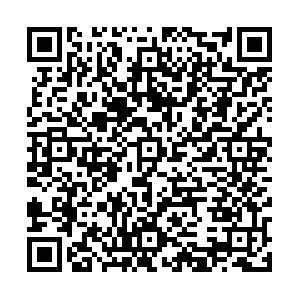Investigation on related knowledge, attitude and behavior of dengue fever and influential factors among undergraduates in Guangzhou City
-
摘要: 目的 调查广州市大学生登革热的防控基本知识、疫情相关态度及行为,为更高效地遏制高校登革热传播,更好开展高校防控工作提供科学根据。方法 采用整群抽样的方法,通过匿名自填问卷的方式对广州市1 564名大学生进行调查。结果 1 564名大学生中有1.4%在调查前2个月期间被确诊为登革热,48.5%学生担心自己在这次疫情中受到感染;受访大学生登革热防控知识的平均得分为(72.7±16.4)分,不同专业、地区的学生登革热防控知识存在差异;受访大学生登革热防控行为的总实施率为69.3%,其中“及时清理宿舍及周围积水”的行为实施率最高(85.0%);大学生获取登革热防控信息的主要来源是网络(67.6%);性别、专业、年级、生源地、防控知识和防控态度是登革热防控行为的影响因素。结论 本次受访大学生的登革热感染率较高,但防控态度积极,防控知识及行为仍需加强与完善,高校仍需要有针对性加强宣教和相关防控措施,避免疫情的再度复燃。Abstract: Objective To investigate dengue fever related knowledge, related attitude and behavior in university students in Guangzhou, and to provide scientific evidence for the university in order to efficiently control the spread of dengue fever and carry out prevention work. Methods A total of 1 564 students selected by random cluster sampling were surveyed with questionnaire. Results In the first two months before the investigation, 1.4 % students were diagnosed with dengue fever. About 48.5% students were afraid of being infected. The average score of knowledge was (72.7±16.4), different majors and areas also had statistical significance. The total protective behavior rate of the students was 69.3%. About 85.0% students could drain water and clean up dormitory timely. The dengue fever knowledge was obtained mainly through internet(67.6%). Multivariate Logistic regression analysis showed that the gender, major, grade, area, knowledge and attitude were the influencing factors of dengue prevention behavior. Conclusions The dengue infection rate of surveyed students was high. Except having positive attitude, knowledge and behavior of prevention are still need to strengthen and improve. Colleges should enhance education and relevant prevention measures to avoid the dengue fever be reignited.
-
曹庆,罗雷,景钦隆,等. 广州市2011年登革热疫情流行病学特征分析[J]. 热带医学杂志, 2013,13(2):519-521. 乔梦凯,石利民,王燕,等. 南京市2011年手足口病流行病学及病原学特征分析[J]. 中国医学创新, 2013,10(1):89-91. 熊益权,陈清. 1978-2014年我国登革热的流行病学分析[J]. 南方医科大学学报, 2014,34(12):1822-1825. 黄清臻,傅军华,严子锵,等. 城市登革热防控几点建议[J]. 中国媒介生物学及控制杂志, 2015,26(2):117-119. 江毅民,严子锵,胡志刚,等. 气候因素用于白纹伊蚊密度预测的探索[J]. 热带医学杂志, 2014,14(2):235-237. 国家统计局.中国统计年鉴[M]. 北京: 中国统计出版社,2013. 龙健灵,林斌,张萍,等. 广东省登革热的流行病学特征分析[J]. 中国医药科学, 2015,5(11):183-185. 王道斌. 学生登革热病例数超500[N]. 南方都市报,2014-09-26(GA08). 周薇薇,罗春花,范存欣,等. 广州市大学生健康素养现状及影响因素分析[J]. 中华疾病控制杂志, 2014,18(7):654-658 吴培标,杨少逵,王小英,等. 潮州市居民登革热防治知识知晓情况调查分析[J]. 华南预防医学, 2014,40(2):174-176. 桂维民.应急决策论[M]. 北京:中共中央党校出版社, 2008:150-153. 刘文新,陈少凯,陈炳忠. 登革热96例临床分析[J]. 临床荟萃, 2000,15(22):1021. 段利娜,吴泰顺,马智超,等. 登革热流行危险地区中学生登革热知识态度行为分析[J]. 中国热带医学, 2015,(6):695-699 王敏. 防控工作及健康教育在登革热防治中的重要性[J]. 云南医药, 2015,36(3):383-384. -

 点击查看大图
点击查看大图
计量
- 文章访问数: 275
- HTML全文浏览量: 51
- PDF下载量: 2
- 被引次数: 0



 下载:
下载: